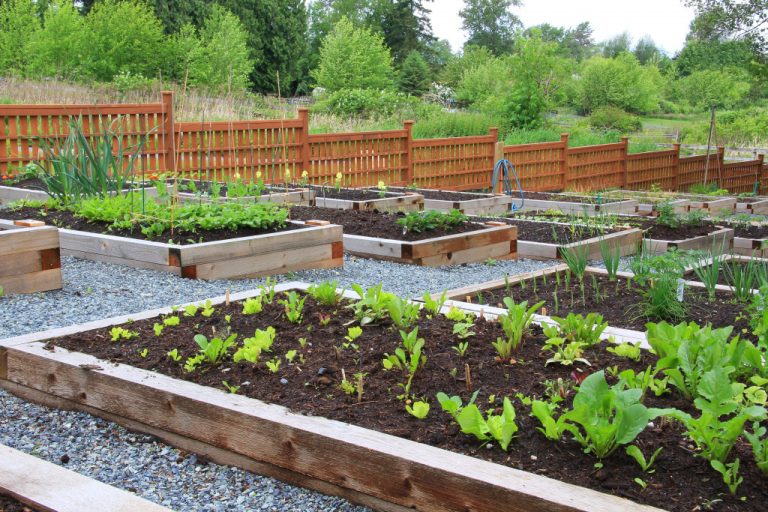- Ensure adequate space and soil preparation for growing vegetables with proper sunlight, water, and nutrients.
- Eat more fresh fruits and vegetables to reduce the risk of heart disease, stroke, type 2 diabetes, obesity, and cancer.
- Choose the right plants, such as leafy greens (spinach, kale, lettuce), tomatoes, peppers (bell & hot), and squash (winter & summer) for your garden.
- Harvest vegetables correctly by learning the unique indicators of each variety.
Growing your food offers many benefits to people, both physically and mentally. Eating fresh produce, you have developed can provide satisfaction and accomplishment and improve physical and mental health.
Nutrition is one of the most essential aspects of maintaining a healthy lifestyle. Growing vegetables is a great way to access abundant nutrients, vitamins, minerals, antioxidants, and fiber. Eating more fresh fruits and vegetables has been linked with a decreased risk of heart disease, stroke, type 2 diabetes, obesity, and cancer. Studies have shown that people who ate at least five servings of fruits and vegetables per day experienced lower levels of depression than those who consumed only 1-3 servings daily.
However, it can be challenging to start growing your food. It’s essential to consider the various aspects of gardening to ensure success. Here are some tips to help you get started:
Prepare the Space

Growing vegetation requires adequate preparation of the outdoor space to ensure a successful harvest. It is essential to take time to plan your garden and prepare the area so that plants have access to proper sunlight, water, nutrients, and air. Here are a few steps you can take to design an outdoor space for growing vegetables properly:
Several factors help you choose the proper location for your garden. Consider the amount of sunlight, water, and soil nutrients your plants need. Sunlight will be crucial, as many vegetables require at least 6 hours of direct sunlight daily. Of course, too much sunlight can be just as detrimental as too little sunlight, so be sure to find a spot that gets the right balance. If impossible, you can build a sturdy hoop house to shield your plants from too much exposure to direct sunlight or wind.
Preparing the soil, however, will be one of the most critical steps to take. Test the pH level of your soil and adjust it if necessary; a pH range between 6 and 7 is ideal for growing vegetables. Incorporate organic materials such as compost, aged manure, and peat moss into the soil to improve its texture and fertility. Loosen up compacted soils to provide better drainage for roots. Finally, ensure you use clean tools when preparing your garden beds, as contaminants can transfer from device to ground.
Choose Appropriate Plants
Growing your food offers a tremendous opportunity to access fresh, nutrient-rich produce daily. Choosing the right plants is essential for achieving a successful harvest. Here are some of the best plants that you can add to your garden:
Leafy Greens
Leafy greens like spinach, kale, lettuce, and arugula offer many vitamins and minerals. Lettuce contains high levels of folic acid and Vitamin C, while spinach is an excellent source of calcium and magnesium. Kale provides antioxidants like lutein and zeaxanthin, which help protect eye health. Arugula contains plenty of Vitamin K, which helps reduce inflammation. Leafy greens are easy to grow in any garden; they only need sunlight and water!
Tomatoes
Tomatoes are one of the most popular vegetables to grow in home gardens. They provide lycopene which helps prevent heart disease and cancer; beta-carotene, which promotes vision health, Vitamin C for a robust immune system; and fiber for digestive regularity. Growing tomatoes requires adequate sunlight exposure and warm soil temperature to ensure germination success.
Peppers
Peppers come in many shapes and sizes; bell peppers provide Vitamin C, while hot peppers contain capsaicin which helps reduce inflammation. Growing peppers require more attention than other vegetables because these plants need a lot of water throughout their life cycle; up to 1 inch per week is suggested during summer. As long as pepper plants get enough moisture, they will thrive!
Squash
Squash is another vegetable that can be grown quickly in home gardens. This includes winter squash, butternut squash or pumpkins, and summer squash, like crookneck or zucchini. Squash contains beta-carotene, which helps improve vision and promote skin health due to its high vitamin A content. Moreover, it also provides essential minerals such as potassium and magnesium for cardiovascular health support!
Learn Proper Harvesting Methods

Harvesting vegetables correctly is critical to ensuring a safe and successful harvest. The best way to do this is by learning the proper harvesting techniques for each vegetable you grow. Each variety of plant has unique indicators that tell you when it’s ready to be harvested; this includes colors, sizes, shapes, etc.
For example, tomatoes should be picked when they turn red and feel firm when touched. Peppers can be harvested once they reach their full size and change color (i.e., green peppers turn red). Leafy greens like lettuce can be harvested when they reach full maturity, typically about 60 days after planting the seeds or seedlings into the soil. Squash must be harvested while still young and tender for the best flavor.
Final Thoughts
Growing your food can be rewarding and provide your family with a great source of fresh produce. However, it is essential to consider the various aspects of gardening before getting started. Ensure you adequately prepare the space with proper sunlight, water, and soil nutrients; select appropriate plants that will thrive in your area; and learn how to harvest vegetables correctly. Following these tips will help ensure success in growing your food!













